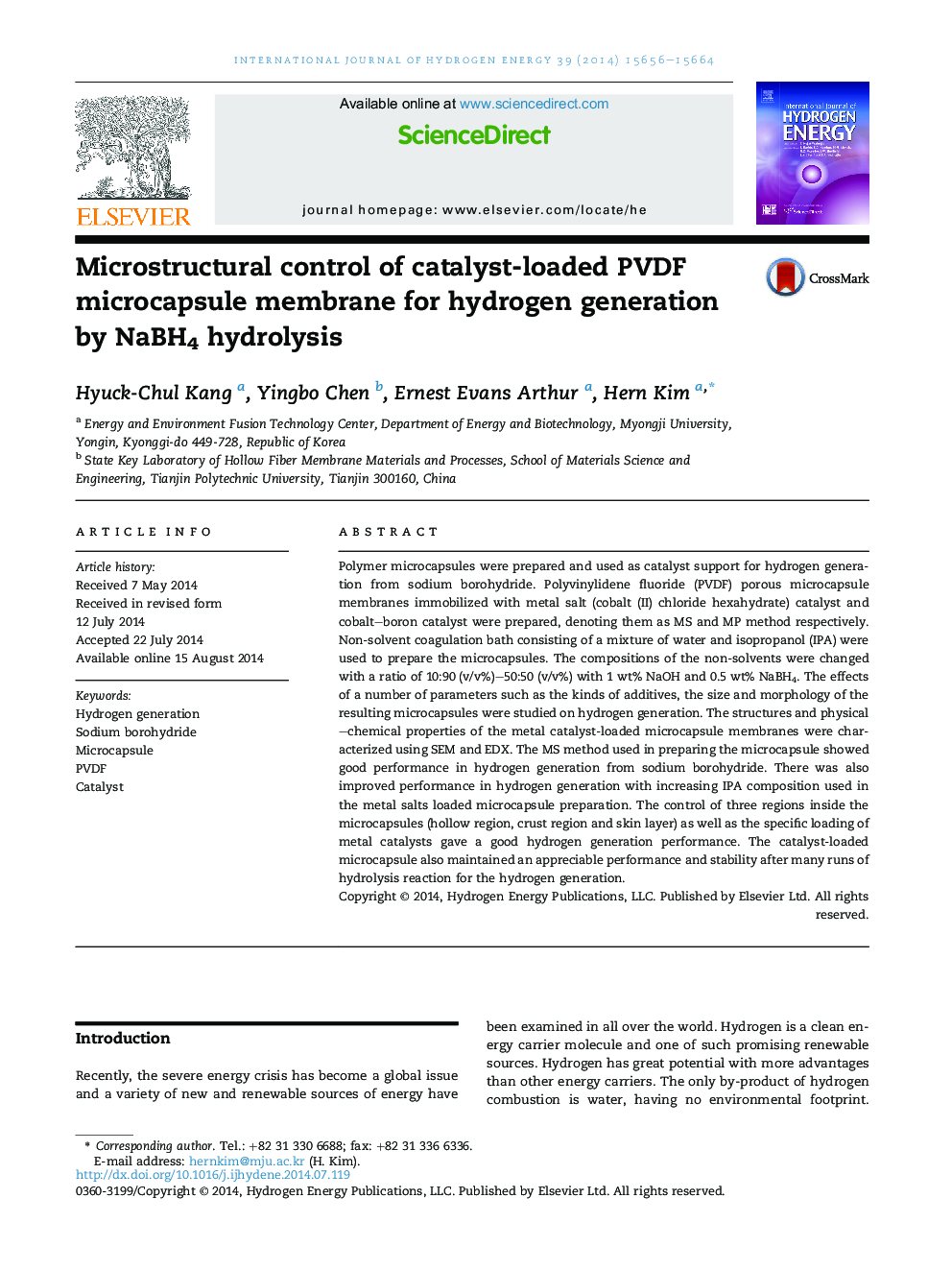| Article ID | Journal | Published Year | Pages | File Type |
|---|---|---|---|---|
| 1272403 | International Journal of Hydrogen Energy | 2014 | 9 Pages |
•Catalyst-loaded polymer microcapsule was synthesized for hydrogen generation.•The morphology of the microcapsule was controlled for better hydrogen generation.•The catalyst-loaded polymer microcapsule showed good stability.
Polymer microcapsules were prepared and used as catalyst support for hydrogen generation from sodium borohydride. Polyvinylidene fluoride (PVDF) porous microcapsule membranes immobilized with metal salt (cobalt (II) chloride hexahydrate) catalyst and cobalt–boron catalyst were prepared, denoting them as MS and MP method respectively. Non-solvent coagulation bath consisting of a mixture of water and isopropanol (IPA) were used to prepare the microcapsules. The compositions of the non-solvents were changed with a ratio of 10:90 (v/v%)–50:50 (v/v%) with 1 wt% NaOH and 0.5 wt% NaBH4. The effects of a number of parameters such as the kinds of additives, the size and morphology of the resulting microcapsules were studied on hydrogen generation. The structures and physical–chemical properties of the metal catalyst-loaded microcapsule membranes were characterized using SEM and EDX. The MS method used in preparing the microcapsule showed good performance in hydrogen generation from sodium borohydride. There was also improved performance in hydrogen generation with increasing IPA composition used in the metal salts loaded microcapsule preparation. The control of three regions inside the microcapsules (hollow region, crust region and skin layer) as well as the specific loading of metal catalysts gave a good hydrogen generation performance. The catalyst-loaded microcapsule also maintained an appreciable performance and stability after many runs of hydrolysis reaction for the hydrogen generation.
